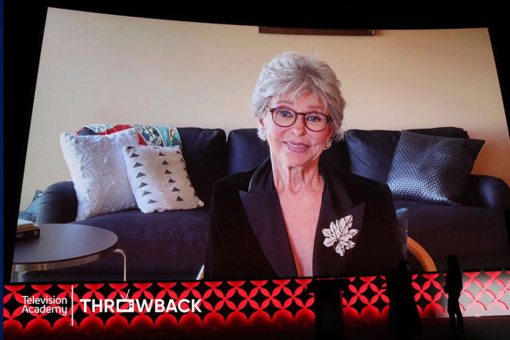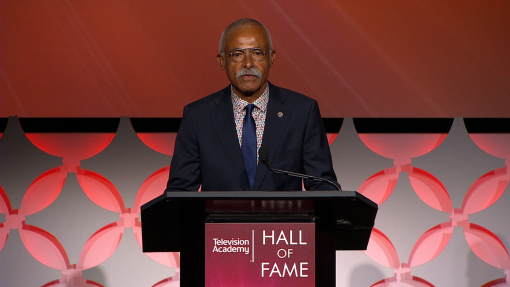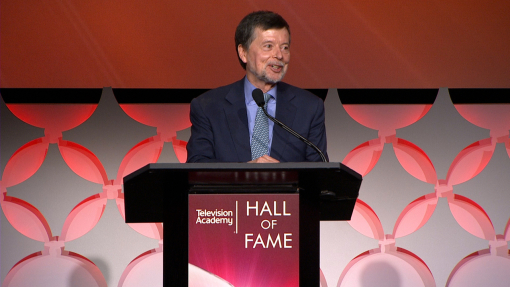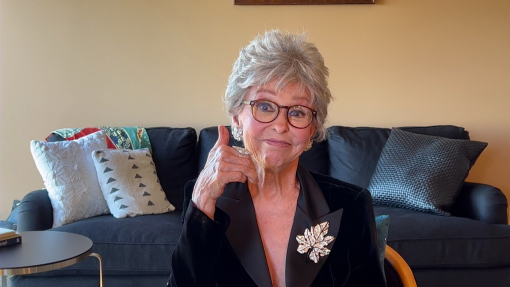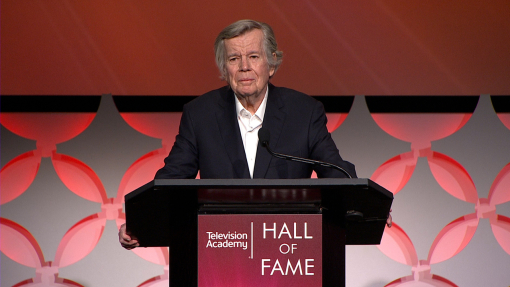One afternoon back in 1954, Diahann Carroll — then 19 and a rising actor-singer who had just booked a part in the big-screen version of Carmen Jones — was letting her ingénue-ity show to Truman Capote. The incorrigible author of Breakfast at Tiffany’s was meeting with Carroll about a role in House of Flowers, a musical based on one of his short stories that was gearing up for Broadway. After their talk, Capote and Flowers’ famed tunesmith Harold Arlen “placed me on the elevator leaving this penthouse,” recalls Carroll. “And Truman said to me, ‘When you go to California to do your movie, do a little living.’ I said, ‘Why?’ They said, ‘Just listen to us. Grow up a little bit, please, Miss Johnson.’”
Carroll — born Caroline Diahann Johnson in 1935 — not only wound up starring in Flowers, she has since lived enough to impress even Capote.
On the page-turning memoir side, Carroll has been married four times (tragically, one husband died in a car crash; her last union, to singer Vic Damone, ended in 1996).
Want the survivor angle? At age 63, she was diagnosed with breast cancer — and rebounded quickly and became a determined activist.
There have been hard-fought triumphs in showbiz, too. In 1962 — in the heat of the Civil Rights era — she earned a Tony for her turn as a fashion model in love with a white journalist in the musical No Strings; in 1974, she nabbed an Oscar nomination for her delightfully lively, titular performance as Claudine, a single, scrappy mom trying to raise her kids on welfare.
But it was Carroll’s work on Julia — the first television series centered on a professional African-American — that truly changed lives.
The 1950s had begat Beulah, a sitcom that revolved around the doting maid of a white family. But Julia Baker, as imagined by show creator Hal Kanter and smartly played by Carroll, was a wry-witted, quietly spirited widow who juggled motherhood (Marc Copage played her son Corey), working as a nurse, dating and friendships, some of whom were white people like her boss, Dr. Morton Chegley (Lloyd Nolan).
Julia (on the phone applying for her job): Did they tell you I’m colored?
Dr. Chegley: What color are you?
Julia: Why, I’m Negro.
Dr. Chegley: Have you always been a Negro, or are you just trying to be fashionable?
That bit of dialogue from Julia’s premiere episode — it debuted September 17, 1968 — is a milestone in pop culture’s own march for civil rights.
Bill Cosby had recently been winning raves and Emmys as Robert Culp’s sidekick on I Spy, several hip crime dramas like The Mod Squad included a black detective in the mix, and the same season Carroll’s sitcom debuted, Star Trek’s Captain Kirk and a certain lieutenant named Uhura (Nichelle Nichols) shared a kiss. But Julia was the Enterprise of TV shows, boldly going where no other had gone before.
The ride: bumpy. In the late ’60s, “everything was erupting in every area,” Carroll recalls, “and racially, Americans were not that familiar with each other. Sitting together, working together, living together, existing together, interacting — it was very difficult.” She credits Kanter for creating a show that made all of the aforementioned look easy enough. “Hal wanted a show with completely integrated characters. And he stuck to it. There is always someone who says, ‘We can do this, but we can’t do that.’ But Hal said, ‘No, it has to be done this way.”
Few shows in TV history have arrived with as much buzz as the genial Julia. When it premiered opposite the entrenched Red Skelton Hour, it was a smash (it ranked number seven for the season in the Nielsens). Disregarding its determined foot in the door, critics derided the show as whitewashed, suggesting its depiction of an upbeat black character who worked and supported a child was somehow a disservice to, as one writer opined, “the bitter realities of Negro life in the urban ghetto.”
Black groups were upset that the show seemed to extend the image of the fatherless black family.
Worst of all was the inflamed reaction from some whites who didn’t want to see blacks at the front of the TV bus. “Of course there was reaction from [bigots],” says Carroll, preferring not to dredge up ugly examples. “Julia was not wearing anything that was familiar to their idea of a black woman. She was wearing a nurse’s uniform, wearing those cute little hats!”
Carroll came from a more enlightened place. Her parents — John, a subway conductor turned real estate whiz, and Mabel, a housewife — were “very loving and very supportive and very Baptist church.” They raised her and her younger sister Lydia in Harlem in an open-minded world where sharing opinions “was our oatmeal.” More to the point, perhaps: “My entire schooling was integrated.”
In kindergarten, she was asked to read poetry for her classmates in the school auditorium (“I couldn’t wait to do it. I think that’s when my parents saw I was a little girl who was going to be in show business”). Later, she attended New York’s famed High School of Music & Art.
So, while Carroll knew racism existed, as a born-and-bred Big Apple-ite who had studied with Lee Strasberg and lived the somewhat bohemian theater life, she was nonetheless caught off guard by all the Julia hoopla.
So much so that after she and Julia were household names, she says, “I ended up in the hospital for a few days.”
Some of the stress resulted from Carroll’s determination to keep Julia as real as a sitcom concoction can be, which led to some showdowns with even Kanter, who had nervous NBC executives to answer to. “It was not about me being the star,” says Carroll; she adds that she insisted, in particular, that the mother-son relationship be written with special care. “I wanted that damn thing to work, and so did Hal, so we finally came to the conclusion that we had to do it together.”
Julia’s success helped open a floodgate of “urban” comedies (The Bill Cosby Show, Room 222) and by the end of its three-year run, the writers had subtly addressed some substantive themes (“The real Santa is black!” little Corey fumed to a white playmate in one Christmas episode).
All said, it’s heartening to hear Carroll recount now, “Through the years, there’ve been so many young white people who say to me, ‘I remember my mother saying, “It’s time for Julia!”’ It was all to watch this young woman no American television show had depicted before.”
Of course, black kids were fixated on Julia, too, and Carroll lights up at the notion that she helped empower a generation. Actress S. Epatha Merkerson (Law & Order), Carroll's costar in the upcoming family comedy feature We the Peeples, was part of that wave. “There are very few people who have affected my life and career like Ms. Diahann Carroll,” says a reverent Merkerson, who was fifteen when Julia premiered. “For me, her pioneering work on television, in film and on stage was not only astonishing, but it made me feel significant. It acknowledged my existence and ignited a desire in me to do the same — to seek a career as an actor.”
Diahann Carroll is much more than Julia, of course. After her Oscar nomination for Claudine, she mixed performing in Las Vegas with the occasional stage success (she replaced Elizabeth Ashley during the original run of Agnes of God) and TV appearance (Roots: The Next Generation).
Then, in the ’80s, along came another name she will forever be associated with: Dynasty’s rich and bitchy Dominique Devereaux. Carroll pursued the role on the sudsy ABC sensation (which later landed her in a spin-off, The Colbys) herself. “All those beautiful women in Nolan Miller dresses! I thought, Wouldn’t this be fun! So I found a way to march through that door, and I was lucky.”
With all her drive, it was inevitable that Carroll would end up slaying ’em as Norma Desmond, as she did in Toronto in a 1995 production of the musical take on Sunset Boulevard. But since her cancer battle in 1998, she’s learned to slow down and smell the gardenias. “I realized how important my friends are to me. They just rallied together. Bad times can make you very grateful.”
A typical day for Carroll starts with her sending emails “back and forth” with her daughter Suzanne, a former CNN reporter turned screenwriter who lives in London. Hot topic: her grandkids. When they visit, “I am totally at their mercy when they begin to ask questions and their eyes are looking up to me for answers.” She takes pains to not come off as Granny Guru. “There is a lovely little phrase: Go ask Mommy.”
And like any trooper, Carroll relishes work. She recurred on Grey’s Anatomy as Jane, the hard-nosed mother of doctor Preston Burke (Isaiah Washington).
Now, on USA’s lighthearted caper drama White Collar, a sort of re-imagining of It Takes a Thief, she costars as June, a world-savvy widow with a Park Avenue penthouse and a penchant for championing second chances like her boarder, a reformed con man turned quasi-Fed (Matt Bomer).
Collar's creator and executive producer, Jeff Easton, says he designed June “as somebody who had faced off against life with dignity all the way through. When I talked with Diahann, I realized very quickly she was perfect for the role. She’s got this sharp sense of humor and carries herself with the sort of class that just can’t be acted.”
Carroll has a fondness for the character, as well. “I like the fact that she has gone through a multi-faceted life,” she says. “She seems to be the kind of woman that lived it and doesn’t have to talk about it.”
This tribute originally appeared in the Television Academy Hall of Fame program celebrating Diahann Carroll's induction in 2011.

